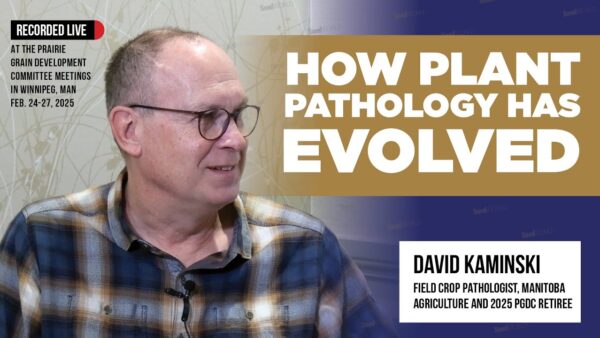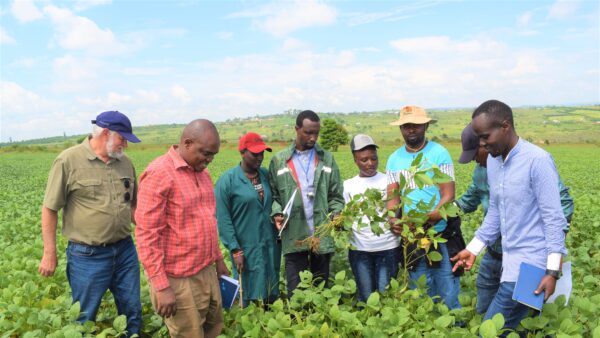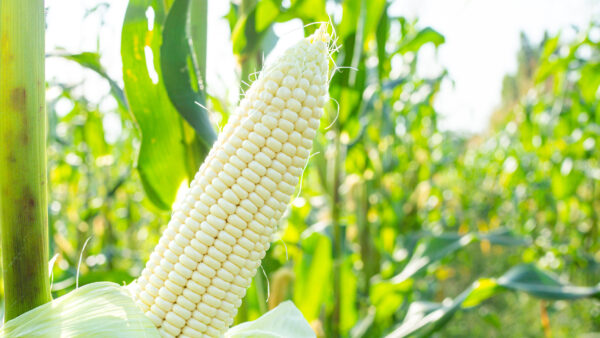Lessons from Licensors
Seed World spoke with three genetic providers about licensing, access to genetics and the opportunities they are most excited about.
|
|
Tim Johnson is the president of SGI Field Crops Division/Illinois Foundation Seeds, Inc. Prior to this position he served as president, executive vice president and vice president of marketing for Seed Genetics, Inc. which was acquired by Illinois Foundation Seeds. Johnson is currently first vice president of the International Seed Federation. He also serves on the executive board of the American Seed Trade Association and participates in a number of other seed organizations. |
|
|
Bob Thurston is the president of Thurston Genetics. He began his career in 1970 working as quality control manager for the Trojan Seed Company in Olivia, Minn., after which he served as production manager for Trojan Seeds in Illinois. From 1977 until 1980 he worked for RBA Seeds as vice president of operations in Olivia. In 1980, he founded Thurston Incorporated, still in operation today, and in 1993 he founded Thurston Genetics, which is now owned by BASF. |
|
|
Ron Wulfkuhle is head of GreenLeaf Genetics, LLC, a Syngenta wholly-owned subsidiary which outlicenses corn and soybean genetics and traits to independent seed companies. He has headed GreenLeaf since its creation in 2004 and prior to that held a variety of marketing and management positions within Syngenta legacy companies, dating back to 1984. He has served on a number of industry organizations, including his current seat on the Nebraska State Seed Advisory Board. |
SEED WORLD: What traits and/or genetics are you most excited about in the coming years, and why?
BT: I think we are well established with input traits in the marketplace, but there will be continued improvements with existing herbicides and insect-resistant traits. As trait stacks and seed packages continue to evolve, the refuge-in-a-bag technology will be a significant part of the seed corn industry. I think the most exciting traits for the future will come in the area of drought resistance, yield, nitrogen utilization and output traits for nutrition and food purposes. Genetics will continue to improve at a much quicker pace, due to improved breeding techniques.
RW: The launch of the Agrisure Viptera 3111 corn trait has garnered much excitement across the industry. The number of stories and testimonials regarding this traits performance has been remarkable and the encouragement from our customers to support a broad and complete launch is very exciting. Next in line after Agrisure Viptera 3111 corn hybrids will be hybrids with Agrisure Artesian technology, which represents the industry’s first water-optimized corn technology. We have started work on developing Agrisure Artesian technology inbreds and hybrids to make available to independent seed companies.
TJ: Regarding the trait side of the business, I’m most excited about stacking traits in combinations for refuge-in-a-bag. The ability to reduce the amount of refuge corn and manage stewardship from one bag versus using multiple bags in the field is a great opportunity for farmers, seed companies and trait providers. I’m also excited that we can identify the right genetics for our customers and help access the trait package their farmers want.
SEED WORLD: What advice do you have for independent seed companies to better position themselves in today’s competitive environment?
TJ: First focus on what your company does best, whether it is a broad regional brand or more locally selected products and services. Understand who your customers are going to be in the next five years and provide the products they want.
RW: It’s very challenging for an independent seed company to position themselves in today’s marketplace. The corn trait and genetics portfolio is more rapidly changing and complicated than ever before and of course industry competition never relents for a moment. Like any business, an independent has to determine how to be different from their competition and not just different, but better. I believe that most independents are doing this. It’s interesting that many continue to grow, even though the overall segment has shrunk recently due to acquisitions. This tells me that most are positioning their businesses well and have found a path that brings unique value to the grower.
BT: Always be aware of new genetics and new traits that become available in the marketplace, and know what customer (grower) needs are. Beyond product, growers are always in need of information about the newest technologies in the marketplace, and independents can carry this message in a very effective way. Steve Jobs said, “You can’t just ask the customer what they want and then try to give that to them. By the time you get it built, they will want something new.” Because of increasing access to new germplasm and trait technologies, the independents are in a good position to quickly adapt to new products and better serve their customers.
SEED WORLD: In what ways could licensing agreements change as the next generation of traits and genetics hits the market?
TJ: This is a hard question because of the confidentiality of agreements. I think what’s important is for your company to look at the agreements that are available to you and what is best for your company and your customers. Have a checklist for compliance with the agreements. Lastly, continue to review the value of the agreement and the alternatives your company has if the agreement is terminated or not renewed.
BT: There will likely be more restrictions to inbred and hybrid use tied into specific use of trait technology. Everything involved with commercial products has become far more technical with regard to use, restrictions and labeling requirements.
RW: A colleague I used to work with, when in discussions regarding agreements, would state, “Good fences make good neighbors.” Future licensing agreements will continue to evolve and hopefully make better fences and of course will attempt to patch up any “holes in the fence.” More specifically, I think licensees will see enhancements to the agreements in the area of quality management/assurance. As traits become more complex and oftentimes stacked with other traits, it will be very important to have good processes around the testing that is required before launching or selling a new product. This testing helps to assure both us and our customer that the grower will receive the product that is expected.
SEED WORLD: What advice do you offer independents for getting the most out of licensing agreements?
BT: Carefully read and understand all aspects of the license agreement.
Not all aspects of a license agreement are filled with restrictions, but will also provide options and opportunities for your specific needs. Work with your genetic and trait providers to better understand the intent and obligations of your agreement.
RW: While it sounds obvious, the best advice I could give is to “read the agreement,” including the “boiler plate” language at the end. If a licensee has any questions whatsoever after reading the agreement, they should engage with the genetic providers. In addition, I would encourage independent seed companies to stay on top of the new offerings in the market so that we can work together to develop offerings that meet your customer needs.
TJ: Recognize what the agreement offers and what may cause risk or exposure for your company. When you assess those correctly you can get the most out of each agreement.
SEED WORLD: Is access to plant genetics going to increase or decrease in the coming years?
RW: As trait stacks become more complex, it will take longer to get inbreds “fully traited” and to fully test for trait efficacy and product equivalency. Due to the additional time required, it may take longer to develop a complete portfolio of products with complex stacks.
We don’t bring “everything” to market for two reasons. First, we test many inbreds and hybrids that are culled as they are not competitive in the marketplace or have some other weakness. Our strategy is to make available all the high-quality inbreds and hybrids that advance through our stage testing system and can legally be made available to customers.
TJ: For some companies, access to plant genetics will increase, and for others it will decrease. For example, if a genetic package cannot be combined with traits your customer wants, then you will recognize a decrease in genetic access, but other genetics may become available to you in those particular traits. This is why I think seed companies and farmers are going to see increases and decreases in accessing genetics when 90 percent of the acres in United States are planted with hybrids containing traits.
BT: I believe access to genetics will continue. However, there may be fewer sources of genetics due to continued mergers and acquisitions. I don’t believe access to plant genetics will necessarily increase, although they will continue to be available, providing that the seed company has a need and also meets its obligations to the germplasm provider.
Julienne Isaacs and Julie McNabb













